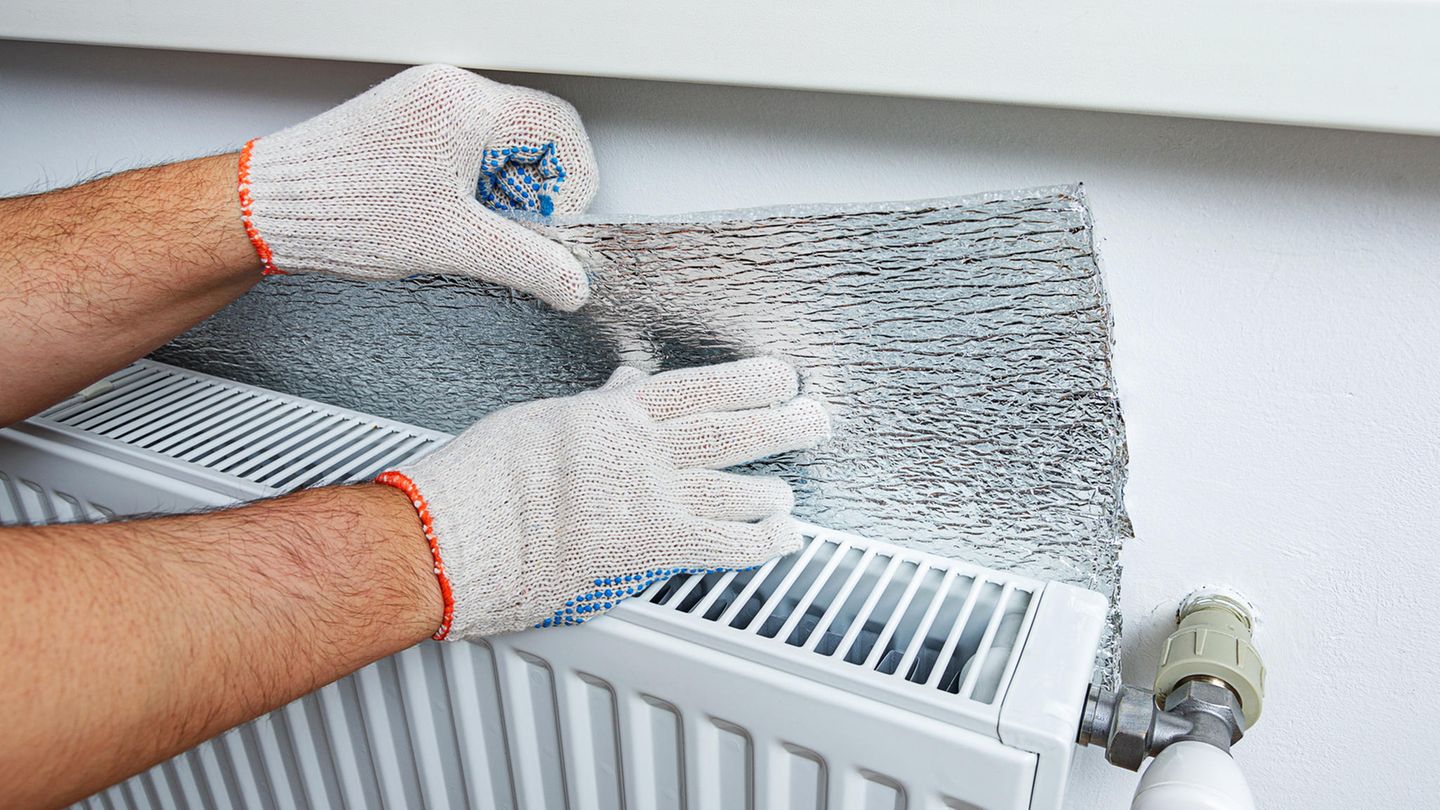Many radiators are found on outside walls and near windows, so that a large part of the heat generated is lost – if there is poor insulation. In order to reduce the resulting (high) energy costs, more and more households are turning to reflective films. But do they really help?
Reflective films for radiators are thin insulation panels that are usually coated on one side with aluminum. This is intended to reflect the heat radiated backwards back into the room instead of being lost through poorly insulated external walls (as is often the case in old buildings). However, the question arises as to how effective the attachment really is. And do reflective films possibly pose certain risks? We’ll tell you.
This is what you need to know about reflective films
Basically, the thicker a radiator reflection film is, the better the insulation should be – but the price naturally increases with increasing thickness. Depending on the manufacturer, this often starts with but there are also insulation mats that are between and or even up to are thick. And that’s not the only difference: Reflective films can be used either with an adhesive tape (or, for example, a ) can be fixed to the wall or they are self-adhesive. But let’s get to the crucial question of how useful it really is to install an insulation mat behind the radiator?
The good news is: Insulating mats have an insulating effect and should therefore be able to reduce heating costs. The bad news is: According to experts, the savings are just between 1.5 and 4 percent. And only if there is poor external insulation (i.e. in old buildings). As a result, heat is lost through the facade. This means: In modern new buildings, no noticeable change in energy cost billing is expected due to the installation of a reflective film. Assembly can therefore make sense, but only produces a minor effect.
Tip: With one As a new customer, you can save up to 15% when purchasing insulating wallpaper for radiator niches.
This is how you attach the reflective film correctly
Normally reflective films are supplied in rolls, regardless of whether they are are or not. However, thin insulation mats can also be folded – this depends on the respective thickness and the manufacturer. But back to installation: In order for the film to achieve its full effect, you must ensure that the aluminum-coated side always faces the radiator – this is the only way the heat can be reflected back into the room. You should also pay attention to the following points:
- Measure the area behind the radiator (length and width).
- Cut the reflective films to your desired size.
- Remove dust and dirt from the wall behind the radiator.
- Glue the insulation mat as completely as possible and without gaps.
- Remove any air bubbles from the foil using a paint roller.
And another tip: Bring those Always work with two people, then the installation is much easier by hand – one holds the insulation mat and the other smoothes the film to remove any air bubbles. This means the film doesn’t slip during installation.
Avoiding mold formation: This is how it works
Was the If it is improperly attached behind a radiator, moisture can form between the wall and the insulation – and thus promote mold. To avoid this, you can take preventative measures during installation: For example, if the panels are self-adhesive, you should always ensure that there are no gaps between the wall and the film. Here an ordinary one can (preferably with a telescopic rod) to help press the film evenly. Insulation panels, on the other hand, that are not glued on should always have a flush connection to the wall. If you cannot attach the reflective film flush, it is definitely helpful to dismantle the radiator beforehand. Although this requires more effort, it ensures a seamless result.
This article contains so-called affiliate links. Further information are available here.
Source: Stern




